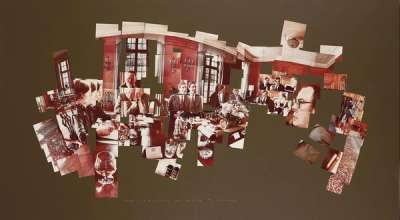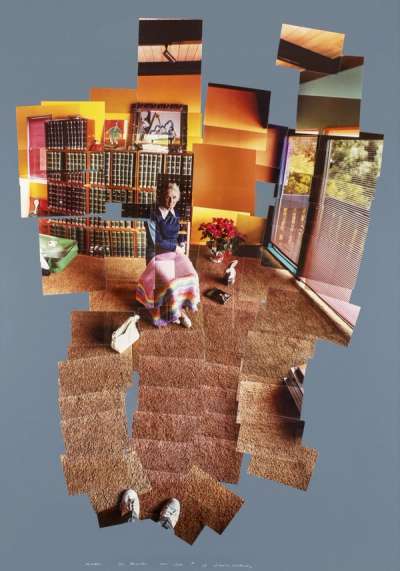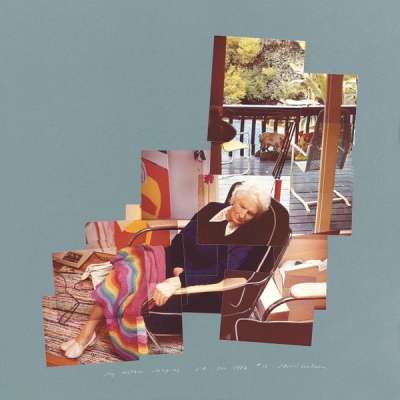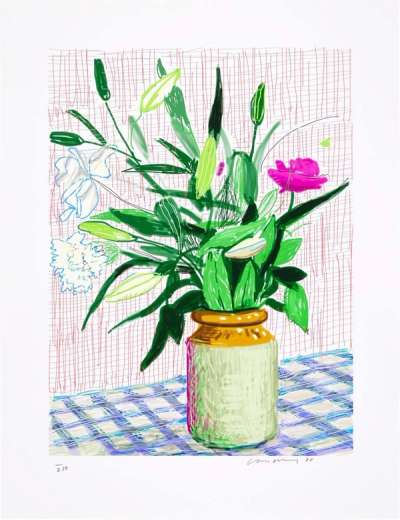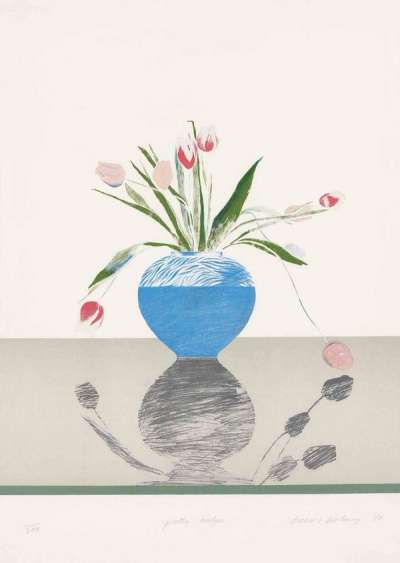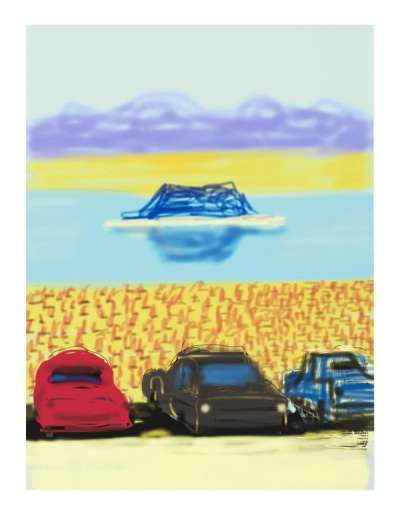
Christopher Isherwood Talking To Bob Holman

Christopher Isherwood Talking To Bob Holman
Signed Print
David Hockney
Price data unavailable
There aren't enough data points on this work for a comprehensive result. Please speak to a specialist by making an enquiry.
110 x 162cm, Edition of 20, Photographic print
Medium: Photographic print
Edition size: 20
Year: 1983
Size: H 110cm x W 162cm
Signed: Yes
Format: Signed Print
Last Auction: May 2019
Auction Results

Track auction value trend
Meaning & Analysis
Created by David Hockney in 1983, Christopher Isherwood Talking To Bob Holman is a signed photographic print that belongs to a series of photo collages termed by the artist as ‘Joiners’. By arranging visually striking sequences of images in joiners, Hockney gives expression to his long standing curiosity about questions of perspective and space.
Instead of a single, static likeness of the sitter, the print presents the viewer with a mosaic of pictures displaying subtle changes in gestures, facial expressions, and bodily language of each person in the room. Taken in quick succession, the photographic images multiply the point of view and invite the viewer’s gaze to scan the collage from side to side, up and down, in search of an anchor point. Singling out a central characteristic of the image and fixing gaze on one feature becomes impossible given the expansive, movement-oriented nature of the composition.
On the left side, the constellation of overlapping hand shots that see Bob Holman writing, holding a cup of coffee or touching his chin, is designed for our eyes to move in circles. As the dense amalgamation of images continues through the centre up to the right side, our eyes travel the collage’s full length from left to right in order to follow individual gestures of each sitter. What follows as a result is the impression of witnessing how the scene progresses from one frame to another. Because the difference between images within each corner of the collage is subtle, scanning them quickly seems to put the human figures and their bodily language in motion.
British-born artist David Hockney is a kaleidoscopic force in the art world. Born in 1937, Hockney's vibrant palette and innovative techniques have left an indelible mark on contemporary art. A pioneer of the British Pop Art movement in the 1960s, he seamlessly transitioned through various styles, from photo collages to vivid landscapes. Renowned for his exploration of light and space, Hockney's versatility extends to painting, printmaking, photography, and stage design. A captivating storyteller, his works often capture the essence of modern life with a playful yet profound touch. With a career spanning decades, Hockney remains an enduring visionary in the ever-evolving art world.







